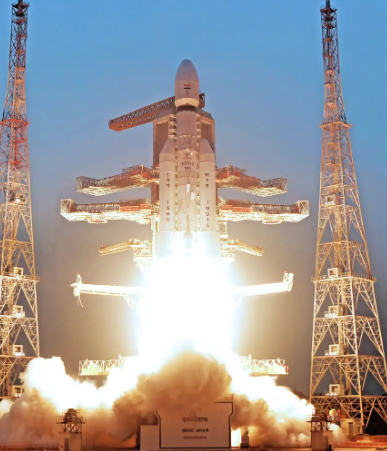Date: November 2, 2025
Visual Coverage

Image Credit: Indian Space Research Organisation (ISRO)
The Indian Space Research Organisation (ISRO) achieved a significant milestone by successfully launching the heaviest communication satellite ever carried by an Indian rocket. The satellite, named CMS-03, weighing approximately 4,410 kg, was launched aboard the homegrown LVM3-M5 rocket, popularly known as ‘Bahubali’. The liftoff occurred from the second launch pad at the Satish Dhawan Space Centre in Sriharikota, Andhra Pradesh, at 5:26 PM IST on November 2, 2025.
About the Satellite and Mission
CMS-03 is a multi-band communication satellite designed to provide enhanced communication services over a wide oceanic region inclusive of the Indian landmass. This mission marks the fifth operational flight of the LVM3 rocket, which was also the launch vehicle for the historic Chandrayaan-3 lunar mission in 2023.
The successful insertion of CMS-03 into the Geosynchronous Transfer Orbit (GTO) demonstrates ISRO’s enhanced heavy-lift capacity, with this launch showcasing an improved performance and a 10% extension in payload capability compared to previous missions.
Significance for India’s Space Programme
The CMS-03 launch validates the homegrown capabilities of ISRO in handling heavier communication satellites, which were earlier reliant on foreign launch vehicles. This serves as a strategic boost for India’s self-reliance in space technology and strengthens the nation’s communication network, including critical applications for maritime domain awareness and the Indian Navy.
ISRO Chairman, V. Narayanan, hailed the mission as a testament to the dedicated efforts of Indian scientists and engineers. Prime Minister Narendra Modi, applauding the achievement, described it as a proud moment that further propels the country’s progress in the global space arena.
Technical Highlights
- The LVM3-M5 rocket, nicknamed ‘Bahubali’, features two powerful S200 solid rocket boosters manufactured at the Vikram Sarabhai Space Centre.
- The third stage is the L110 liquid stage powered by dual Vikas engines designed at ISRO’s Liquid Propulsion Systems Centre.
- The launch vehicle is capable of carrying payloads over 4,000 kg to GTO and up to 8,000 kg to Low Earth Orbit (LEO).
With this landmark accomplishment, ISRO continues to demonstrate its prowess and commitment to advancing India’s position as a key player in space exploration and technology.







